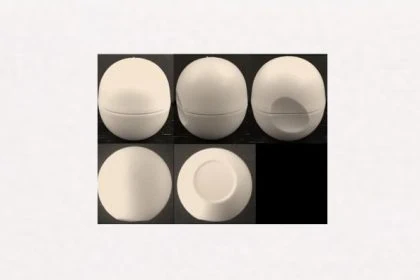One of the partners applies for the sign used within a distribution system alone as a trademark: Bad faith? If one of the partners does so within the framework of a long-standing distribution relationship, even though he is not the only one entitled to do so, then there is bad faith, ruled the LG München.
 The focus of this judgement (LG München, 33 O 14670/19) is the trade mark dispute about the right to use the signs “GL” and “GR” as trade marks for radio remote controls. This case is particularly interesting, on the one hand, because it is a trademark dispute that has meanwhile been fought out internationally, but above all because there was initially a common company history and then a long-standing distribution relationship between the parties to the dispute.
The focus of this judgement (LG München, 33 O 14670/19) is the trade mark dispute about the right to use the signs “GL” and “GR” as trade marks for radio remote controls. This case is particularly interesting, on the one hand, because it is a trademark dispute that has meanwhile been fought out internationally, but above all because there was initially a common company history and then a long-standing distribution relationship between the parties to the dispute.
ECJ case law on bad faith
In principle, there is well established case law on bad faith. According to ECJ case law, the question of whether the applicant knew or should have known that his mark was very similar to another is particularly relevant (see ECJ 2009, C:2009:361; 2019, C:2019:724). While an applicant does not act in bad faith merely because he knew of the use of a sign for the same goods (see ECJ 2013, C-320/12, paragraph 37), there is no “prior use right” in trademark law. However, if a trade mark is applied for with the aim of interfering with the prior user’s acquis or with the intention of blocking further use of the trade mark for the prior user, then there is bad faith. And this is all the more likely if there is an obvious competitive situation.
So how is it to be assessed if one of the partners in a long-standing distribution relationship applies for the signs used in distribution, but he was not entitled to do so alone: bad faith? Or was he entitled to these signs because the rights to the signs were not transferred in the corresponding contracts?
The facts
As one of the leading manufacturers, the plaintiff distributes radio remote controls for cranes, machines and vehicles. The defendant 2) has been the German sales company of the first defendant since 2014, and the plaintiff in turn is the former sales partner of the first defendant. The first defendant is a competitor of the plaintiff. It offers radio remote controls worldwide, inter alia in the Federal Republic of Germany, and also on its website under the signs “GL” and “GR”.
The dispute arose after a licence agreement and a distribution and installation partner agreement between the first defendant and the plaintiff were terminated by the first defendant in 2014 and the plaintiff henceforth distributed the products under the names “GL” and “GR” in Germany via the newly founded second defendant. The plaintiff, in turn, continued the product portfolio of the first defendant despite the termination of the distribution agreement.
This resulted in lawsuits and counterclaims for infringement of trademarks and trade dress. The parties accused each other of having the actual rights to the designations “GL” and “GR” and that the other side infringed them.
In the US, the court in the Western District of Oklahoma ruled against the plaintiff in April and May 2020 and ordered the plaintiff to cease and desist from using the marks in dispute; however, these decisions are not yet final. The parties are also in dispute before the European Trademark Office (EUIPO); the plaintiff filed an application for a declaration of invalidity of the first defendant’s EU trade mark after it had itself been warned by the defendant. This case has also not yet been decided; at the moment, the applicant has appealed against a negative decision of the Board of Appeal.
Before the LG Munich: sole trademark application
In turn, the Munich Regional Court is dealing with this case because the first defendant finally applied for a German word mark “GL” (no. 30 2020 010 728) and a German word mark “GR” (no. 30 2020 010 726) itself on 18 May 2020 respectively – and the plaintiff asserted a claim for injunctive relief under trade mark law against it. This was because the plaintiff had itself applied for the signs “GL” and “GR” as trade marks in August 2015 and referred to the rights based on this priority of the sole trade mark application from the distribution system.
There was identity of signs and goods, or at least a likelihood of confusion. The counterclaim marks of the first defendant were ready to be cancelled due to the earlier priority of the action marks. The plaintiff also argued that the rights to the signs “GL” and “GR” had not been transferred to H. I., Inc., but that the intellectual property rights had remained with H. D. GmbH or its legal successors, i.e. with the plaintiff. It was therefore entitled to file the sole trademark application.
But in vain: the Munich Regional Court ruled that the plaintiff could not rely on its own prior-ranking trade mark rights because these earlier rights had been acquired in bad faith and thus abusively. This was because when the plaintiff applied for the trade marks in 2015, it was well aware, as a former distribution partner of the first defendant, that the respective designations “GL” and “GR” had been used for the same goods by the first defendant and its legal predecessors for a period of 20 years. In view of the worldwide marketing of the radio remote controls with the designations “GL” and “GR” and the internal contractual regulations and the practical experience, the plaintiff could and should have been aware of the intention of the first defendant to use the designations, the Munich Regional Court added. This was to be seen as bad faith in the applicant’s sole trademark application, the Munich court ruled.
Bad faith in the applicant’s sole trademark application
Even an own intention to use does not preclude bad faith; trade marks may generally not be applied for in order to prevent a third party (see also: the Banksy trade mark cancellation). And, according to the Munich Regional Court, an intention to prevent is to be assumed if, within the scope of a long-standing distribution relationship, one of the partners applies for registration of the sign used within a distribution system as a trade mark, although in practical implementation and also due to internal contractual provisions, he is not entitled to it alone.
That was the case in the present case; contrary to the applicant’s view, it did not have sole rights to the marks in dispute. The Munich Regional Court explained that the fact that the designations “GL” and “GR” were used worldwide by all parts of the H. group of companies without any corresponding rights being derived from the plaintiff or its legal predecessors showed that the latter did not hold any rights to these designations and therefore dismissed the plaintiff’s claims.
The court instead upheld the counterclaim against the plaintiff for its bad faith in filing the sole trademark application for the plaintiff’s marks despite the known use of the signs in the distribution system.
Do you need any help in defendence of your trade mark?
Please ask us about our callback offer. We will get back to you as soon as possible!

Sources:
Judgement of LG Munich, 33 O 14670/19
Image:
geralt | pixabay | CCO License







Leave a Reply